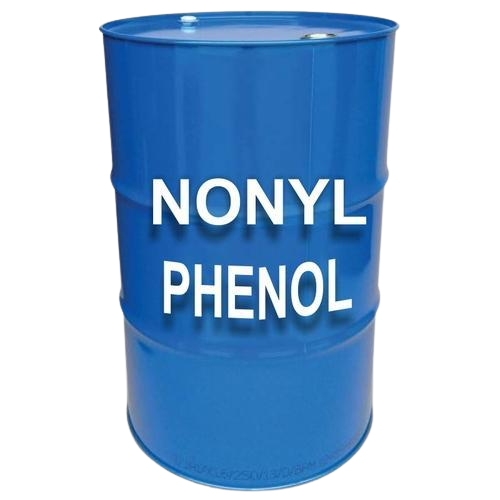Nonyl Phenol
Nonylphenols are a family of closely related organic compounds composed of phenol bearing a 9 carbon-tail. Nonylphenols can come in numerous structures, all of which may be considered alkylphenols. They are used in manufacturing antioxidants, lubricating oil additives, laundry and dish detergents, emulsifiers, and solubilizers.
- Overview
- Applications
- Spesification
Nonionic surfactants are surface active agents which do not dissociate into ions in aqueous solutions, unlike anionic surfactants which have a negative charge and cationic surfactants which have a positive charge in aqueous solution. Nonionic surfactants are more widely used as detergents than ionic surfactants because anionic surfactants are insoluble in many hard water and cationic surfactants are considered to be poor cleaners.
In addition to detergency, nonionic surfactants show excellent solvency, low foam properties and chemical stability. It is thought that nonionic surfactants are mild on the skin even at high loadings and long-term exposure. The hydrophilic group of nonionic surfactants is a polymerized alkene oxide (water soluble polyether with 10 to 100 units length typically). They are prepared by polymerization of ethylene oxide, propylene oxide, and butylene oxide in the same molecule.
Depending on the ratio and order of oxide addition, together with the number of carbon atoms which vary the chemical and physical properties, nonionic surfactant is used as a wetting agent, a detergent, or an emulsifier.
HLB (Hydrophilic-Lipophilic Balance) values for proper applications.
<10 : Lipid soluble (or water-insoluble)
>10 : Water Soluble
4-8 : Antifoaming
7-11 : Water-in-oil emulsion
12-16 : Oil-in-water emulsion
11-14 : Good Wetting
12-15 : Good detergency
16-20 : Stabilizing
Nonionic surfactants include alcohol ethoxylates, alkylphenol ethoxylates, phenol ethoxylates, amide ethoxylates, glyceride ethoxylates (soya bean oil and caster oil ethoxylates), fatty acid ethoxylates, and fatty amine ethoxylates. Another commercially significant nonionic surfactants are the alkyl glycosides in which the hydrophilic groups are sugars (polysaccharides).
Nonionic surfactants include alcohol ethoxylates, alkylphenol ethoxylates, phenol ethoxylates, amide ethoxylates, glyceride ethoxylates (soya bean oil and caster oil ethoxylates), fatty acid ethoxylates, and fatty amine ethoxylates. Another commercially significant nonionic surfactants are the alkyl glycosides in which the hydrophilic groups are sugars (polysaccharides).
- NONYL PHENOL (NP) is used in the manufacture of NP- ethylene oxide condensates for application as non ionic surfactants.These condensates on subsequent sulphonation yield anionic surfactants.
- NONYL PHENOL is used in the manufacture of oil soluble phenolic resin.
- NONYL PHENOL is used in the manufacture of derivatives finding application as corrosion inhibitor in lubricating oils.
- NONYL PHENOL esters with inorganic acids find application as flame retardants and plasticizers.
- NONYL PHENOL is used in the manufacture of agricultural chemicals, aromatic oils, germicides, anti-sludge agents etc.
The Hydrophilic-Lipophilic Balance (HLB) of EO surfactant is related to the hydrophilic portion of the molecule. More hydrophilic groups enable more solubility in water as more hydrogen bondings exist. They are non-ionic in solution which has no electrical charge, which means well-work in hard water at low temperatures as well as stability in acid and alkali solution and compatibility with other surfactants. Generally, surfactant’s name are formed by adding the mole number of ethylene oxide.
OTHER USES
Detergents and Industrial Cleaners, Dispersants, Stabilizers, Sanitizers, Defoaming Agents. Agrochemical Emulsifiers, Metal Working, Textile Processing, Paper De-inking, Drilling Products Intermediate Anionic Surfactants Synthesis, Dust Control, Adhesive, Plastic Industry, Lube Oil, Cosmetic and Pharmaceuticals
| PRODUCT IDENTIFICATION | |
| CAS NO | 26027-38-3 |
| FORMULA | C9H19C6H4(OCH2CH2)nOH |
| TOXICITY | Oral rats LD50: 1600mg/kg |
| SYNONYMS | POE nonyl Phenyl Ether ;Ethoxylated nonylphenol; Polyoxyethylene Nonylphenyl Ether; |
| CLASSIFICATION | SURFACTANT |
| sales specification | |
| EO 2 MOL | |
| APPEARANCE | Clear oily liquid |
| SPECIFIC GRAVITY | 1.03 ± 0.010 |
| CLOUD POINT (1% H2O) | < 25 C |
| APPRX HLB | 5.7 |
| EO 4 MOL | |
| APPEARANCE | Clear oily liquid |
| SPECIFIC GRAVITY | 1.03 ± 0.010 |
| CLOUD POINT (1% H2O) | < 25 C |
| APPRX HLB | 9 |
| EO 5 MOL | |
| APPEARANCE | Clear oily liquid |
| SPECIFIC GRAVITY | 1.035 ± 0.010 |
| CLOUD POINT (1% H2O) | < 25 C |
| APPRX HLB | 10 |
| EO 6 MOL | |
| APPEARANCE | Clear oily liquid |
| SPECIFIC GRAVITY | 1.04 ± 0.010 |
| CLOUD POINT (1% H2O) | < 25 C |
| APPRX HLB | 11 |
Human health hazards

